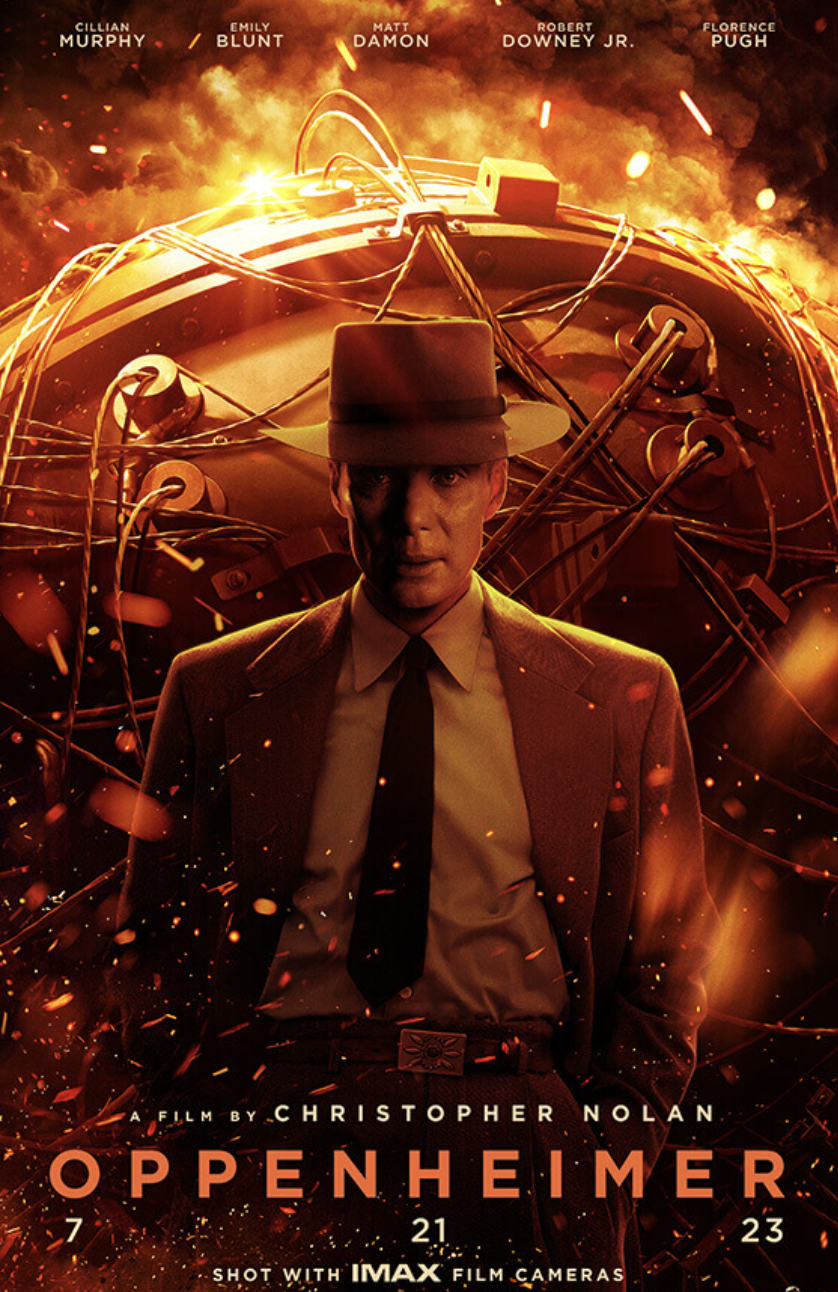
News
Summers Will Not Finish Semester of Teaching as Harvard Investigates Epstein Ties

News
Harvard College Students Report Favoring Divestment from Israel in HUA Survey

News
‘He Should Resign’: Harvard Undergrads Take Hard Line Against Summers Over Epstein Scandal

News
Harvard To Launch New Investigation Into Epstein’s Ties to Summers, Other University Affiliates

News
Harvard Students To Vote on Divestment From Israel in Inaugural HUA Election Survey
On ‘Oppenheimer’: The Pink Cloud and the Ethics of Subjectivity

On July 21, 2023, Greta Gerwig’s “Barbie” and Christopher Nolan’s “Oppenheimer” came together to create the most cinematic cultural phenomena in 2023. Dubbed “Barbenheimer,” theatergoers were witness to parades of pink clashing with processions of blacks as each party switched from Gerwig to Nolan. Yet underneath all of this film fervor was a distasteful oversight: “Barbenheimer” rolls off the tongue perfectly, but when two films that could not be more incompatible are merged into one form, there is a rightful call for offense.
When film fanatics started creating posters to cater to “Barbenheimer,” social media was flooded with warped images of Cillian Murphy (J. Robert Oppenheimer) carrying Margot Robbie (Barbie) and pink atomic clouds. Images like this were produced en masse, creating a cognitive dissonance where the image of the bomb that killed over 100,000 Japanese people was reduced to an incidental aesthetic. This ignorant iconography was lauded by Warner Bros’ official Barbie account, which responded to these images with “It’s going to be a summer to remember” and “We’re always thinking PINK.” These replies were subsequently taken down after the Japanese branch of the studio condemned their actions with the support of Japanese hashtags like #StopBarbieRelease and #NoBarbenheimer.
Although Barbie made its way into Japan on Aug. 11, Oppenheimer’s release in the country was only announced last December, and is said to start screening in late-March, after “months of thoughtful dialogue” as said by the Japanese distribution partner to Universal, Bitters End. Films have been delayed from release in Japan in the past, such as Angelina Jolie’s “Unbroken” whose 2015 release was delayed to 2016. Jolie’s Oscar-nominated film follows the true story of Louis Zamperini’s experiences as a prisoner of war in Japan where he was tormented by prison guard Mutsuhiro Watanebe. Japanese nationalists and conservatives were enraged by the film’s apparent ‘falsification’ of history and the overall portrayal of Japanese individuals in the film. However, this particular issue of misrepresentation is contentious as Japanese scholars responded to these nationalists with the hard truth of national responsiblity.
“Oppenheimer” has followed the same trajectory as “Unbroken,” but “Oppenheimer” differs in the criticism that it receives — rather than raising issues of representation, “Oppenheimer” has no representation at all.
In Nolan’s chronicle of Oppenheimer’s story, the scale of violence enacted by the scientist’s invention towards Japan is never seen. There is not a single Japanese perspective considered in the film, the droppings of the bomb are announced via radio, and Nolan only films Oppenheimer in a tight close-up as he reacts to pictures from the bomb’s aftermath.
Nolan discussed his choices for the film in a Variety interview: “The film presents Oppenheimer’s experience subjectively. It was always my intention to rigidly stick to that. Oppenheimer heard about the bombing at the same time the rest of the world did.”
This reasoning of subjectivity creates a new conversation on trauma as representation. There is an argument that Japanese individuals need not bear witness to yet another depiction of the bombs as the country’s cinematic language has extensively and viscerally covered this subject. From the horrific animation in Mori Masaki’s “Barefoot Gen” (1976) to Shōhei Imamura’s “Black Rain” (1989) there is an abundance of media that rightfully tells Japan’s story. These arguments, however, can fall short in their logic.
On one hand, Nolan’s statement can be interpreted as one of craft. If he is telling the story of Oppenheimer’s individual perspective and confines himself to that perspective, then this film accomplishes exactly what it sets out to. However, Nolan’s dedication to Oppenheimer’s subjectivity may be an implausible goal given his status. He is loved for his challenging yet accessible films, reaching a huge audience across different demographics. Additionally, in a post-Covid-19 world where cinema attendance was on a decline, it could be argued that only Nolan could garner $953.8 million at the global box office with a 3-hour biopic/period piece on this historical subject. The masses that his film reached won’t all have access to watch Japanese films, so he bears the responsibility of delivering a moral message on top of a biographical story.
Moreover, even when Oppenheimer’s direct link to the bomb can be contested with claims that he was merely a cog in the machine of his government, his name will always be synonymous with Japan’s victims.
Karen Umemoto, a second-generation Japanese American, recalls in a KQED article that her reaction to seeing the photos of the bomb victims — images notably absent in the film — are “what made me so resolute in my belief that the nuclear option is bad and should be destroyed.”
The film does, even in its erasure, take a firm anti-nuclear stance. It culminates in a montage of Oppenheimer staring into the void of his destruction and the earth being engulfed in his creations, hinting at the future prospect of nuclear annihilation. But it must be understood that for the Japanese citizens on Aug. 6 and Aug. 9, 1945, this prospect became their reality.
There will undoubtedly be a myriad of opinions from Japanese filmgoers after the film is released. But in the middle of all this dialogue there will remain an important cinematic question when it comes to telling stories of historical mass violence: At what point does subjectivity become erasure?
Want to keep up with breaking news? Subscribe to our email newsletter.
